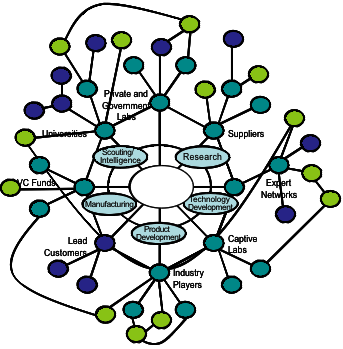Why Yield Farming Needs Cross-Chain Muscle — and Where Binance Smart Chain Fits
Okay, so check this out—DeFi used to feel like the Wild West. Wow!
Liquidity pools, APYs that jump overnight, and dashboards that make your head spin. Seriously?
For many users on Binance’s ecosystem, yield farming has been a mix of big opportunity and annoying friction. My instinct said: there’s a better way. Initially I thought bridges would solve everything, but then realized they introduce new risks and UX headaches that often cancel out their benefits.
Here’s the thing. Yield farming is not just about chasing high percentage returns. It’s about moving assets where they earn most, quickly and cheaply, and without losing them to bridging mistakes or ruggy liquidity pools. Hmm… somethin’ about that balance keeps nagging at me.
On one hand, Binance Smart Chain (BSC) offered a low-fee, fast environment that accelerated yield strategies for many. On the other hand, limiting yourself to one chain means missing niche yields and composability available elsewhere. And that’s where cross-chain infrastructure — properly built bridges and multichain wallets — comes into play.

Why cross-chain matters for yield farmers
Yield opportunities are distributed. Short sentence.
Different protocols specialize in different things — lending on one chain, concentrated liquidity on another, and exotic derivatives somewhere else. My first impression was: just hop every few days. Then reality hit: gas. And slippage. And approvals that feel like a bureaucratic maze.
Bridges let you access those remote gardens of yield, but they are imperfect. Transfers can take time, sometimes long confirmations are needed, and fees can wipe out small gains. There’s also the lurking protocol risk every time value crosses an unfamiliar contract.
So what do serious DeFi users do? They layer solutions. They use bridges with audited contracts, route trades through relayers that minimize slippage, and manage risk by using aggregated cross-chain liquidity tools when possible.
Still, many retail users drop out at the first wallet confusion. I’m biased, but wallet UX is very very important. A clean multichain wallet that handles bridging, approvals and chain switching with minimal mental overhead increases participation and reduces accidental losses.
Binance Smart Chain: fast rails, but not the whole journey
BSC gave people a taste of low-cost DeFi. Short sentence.
Its EVM-compatibility made porting projects easy, and as a result the chain gathered lots of yield options. My gut told me this would draw long-term liquidity. Actually, wait—let me rephrase that: it drew liquidity fast, but retention depends on interoperability with other chains.
When you farm on BSC you benefit from cheap swaps and fast confirmations, which allow tighter strategies like frequent rebalances. However, some niche strategies live on chains with different AMM models or derivatives platforms, so you need efficient cross-chain movement to capture those yields without eating the edge.
Bridging tokens back and forth for small gains can be self-defeating, though. On the one hand bridging with a reputable provider reduces counterparty risk. On the other hand, a sudden exploit or smart-contract bug on a bridge can be catastrophic because funds are locked or misrouted — I’ve watched that before and it stings.
Best practical habits for yield farmers using cross-chain tools
Short practical tips first. Really?
Keep capital allocations meaningful relative to bridge fees. Don’t move $50 across three chains chasing a 3% APY unless you like complicated tax reports. Use bridges with transaction receipts and multisig guardians when moving large sums. Check audits, but remember audits are not guarantees — they only reduce, not eliminate, risk.
Prefer aggregated routers that split swaps across liquidity sources to reduce slippage. Approve tokens with limited allowances where possible, and watch for approvals that grant infinite allowances to unfamiliar contracts. On one hand convenience matters; on the other hand, safety matters more.
Also — this is where wallets matter — use a multichain wallet that lets you see all your positions in one place. That reduces error and cognitive load. For users in Binance’s ecosystem seeking a single, multi-blockchain experience, a dedicated multichain wallet is a huge time-saver and safety boost. Check this recommendation if you’re exploring options: binance wallet
I’ll be honest — setting up cross-chain strategies takes patience. Some nights I juggled contracts and approvals and thought: why did I start this? Then a smart rebalancing move would make a month of fees back in a day and I’d be grinning again. The emotional rollercoaster is real.
Bridges, liquidity, and the danger of composability gaps
Composability is DeFi’s superpower. Short sentence.
But crossing chains breaks composability in subtle ways. A vault on Chain A can’t call a contract on Chain B atomically, which means strategies that rely on synchronous calls may fail or require complex trust layers. That creates opportunities for MEV and timing attacks if you don’t design around it.
Initially I thought cross-chain composability would be solved with wrapped tokens and oracles. Then I saw sequencer disputes and relay forks that caused unexpected states. On one hand these are solvable with better protocol design, but on the other hand they require coordination and sometimes centralized assumptions that make purists twitchy.
Pragmatically, use bridges that minimize trust assumptions and that broadcast clear finality guarantees. When possible, use application-level mitigations like timelocks, retries, and custodial fallbacks only as a last resort. Keep an eye on how the bridge handles rollbacks and reorgs — those are where people lose money.
Where the ecosystem seems to be heading
Layered solutions. Short sentence.
We’re moving toward UX-first tools that stitch chains together with middleware that handles liquidity routing, approvals, and error handling. Middleware can abstract away the complexity of swaps, bridges, and approvals while still keeping users in control of keys and funds. That design pattern hits the sweet spot: convenience without custodianship.
On the policy side, expect more emphasis on audit standards, bridge insurance pools, and interoperable standards that let projects signal bridge compatibility. This will reduce the friction for yield farmers who want to hop chains frequently.
That said, not everything will be solved. Some systemic risks remain, like governance attacks or oracle failures, and those can cascade across bridged assets. So keep reserve capital in a base chain that you trust, and don’t put all your eggs in a single liquidity pool, even if it pays out like a dream.
Common questions from users
Is it safe to bridge tokens for small yield plays?
Short answer: usually no. Bridge fees and risk often outweigh tiny returns. If the yield is large enough to cover bridge costs and the bridge is reputable and audited, then it’s reasonable. But for small sums, consider on-chain alternatives or wait for aggregated cross-chain swaps that can batch transactions.
How should I choose a multichain wallet?
Look for clear account management, PoS support for relevant chains, easy chain-switching, and good transaction histories. UX matters: wallets that show all positions and pending bridge moves reduce costly mistakes. Also prefer wallets with strong community reviews rather than flashy marketing — I’m not 100% sure on any single one, but UX+security trumps bells and whistles.
Can yield farming be automated across chains?
Yes, but automation must be cautious. Automated strategies should include guardrails around slippage, bridge finality, and gas spikes. Use multisig controls or watch-only modes for high-value automation. And always test on small amounts first — practice makes less painful, at least.


